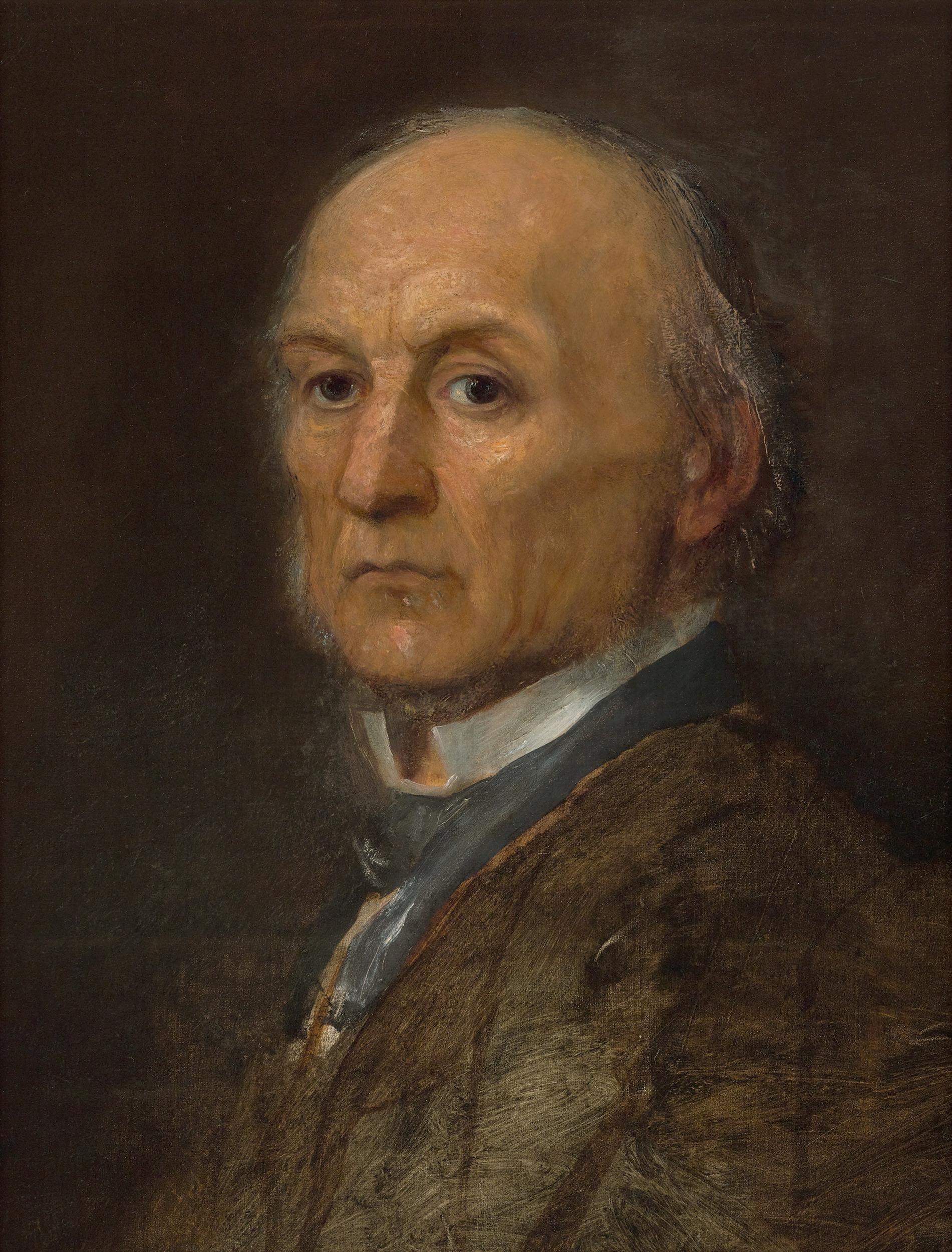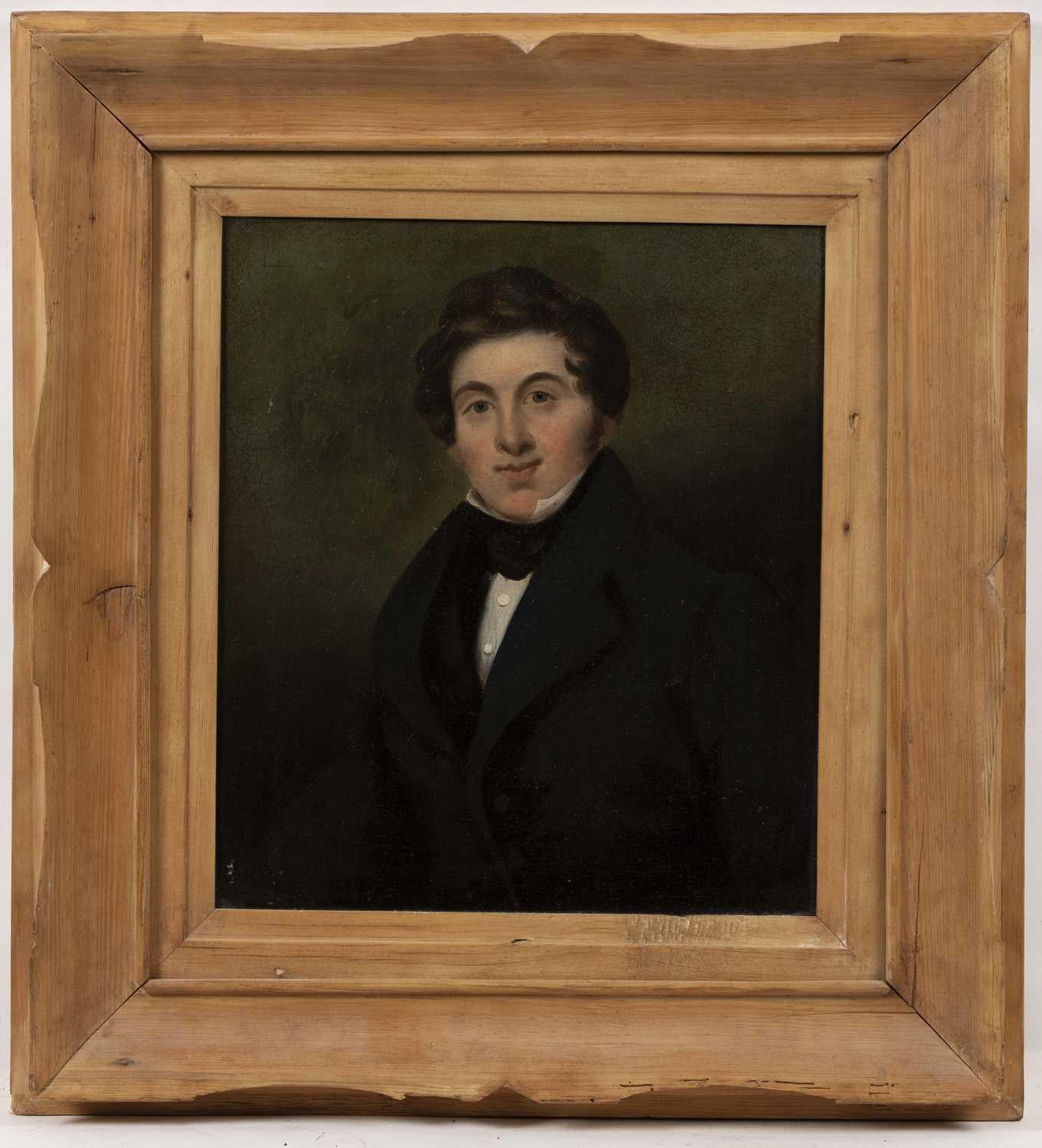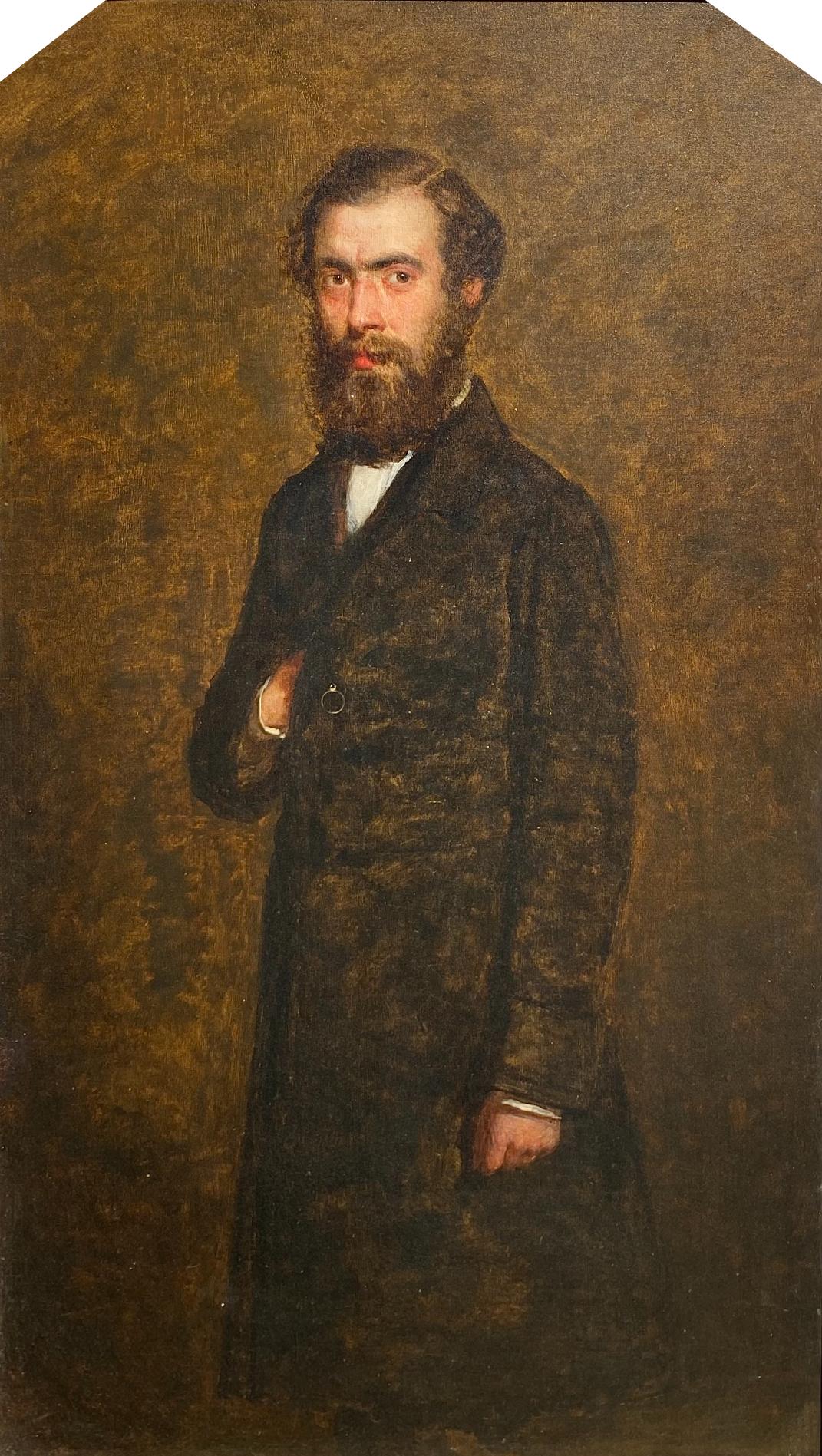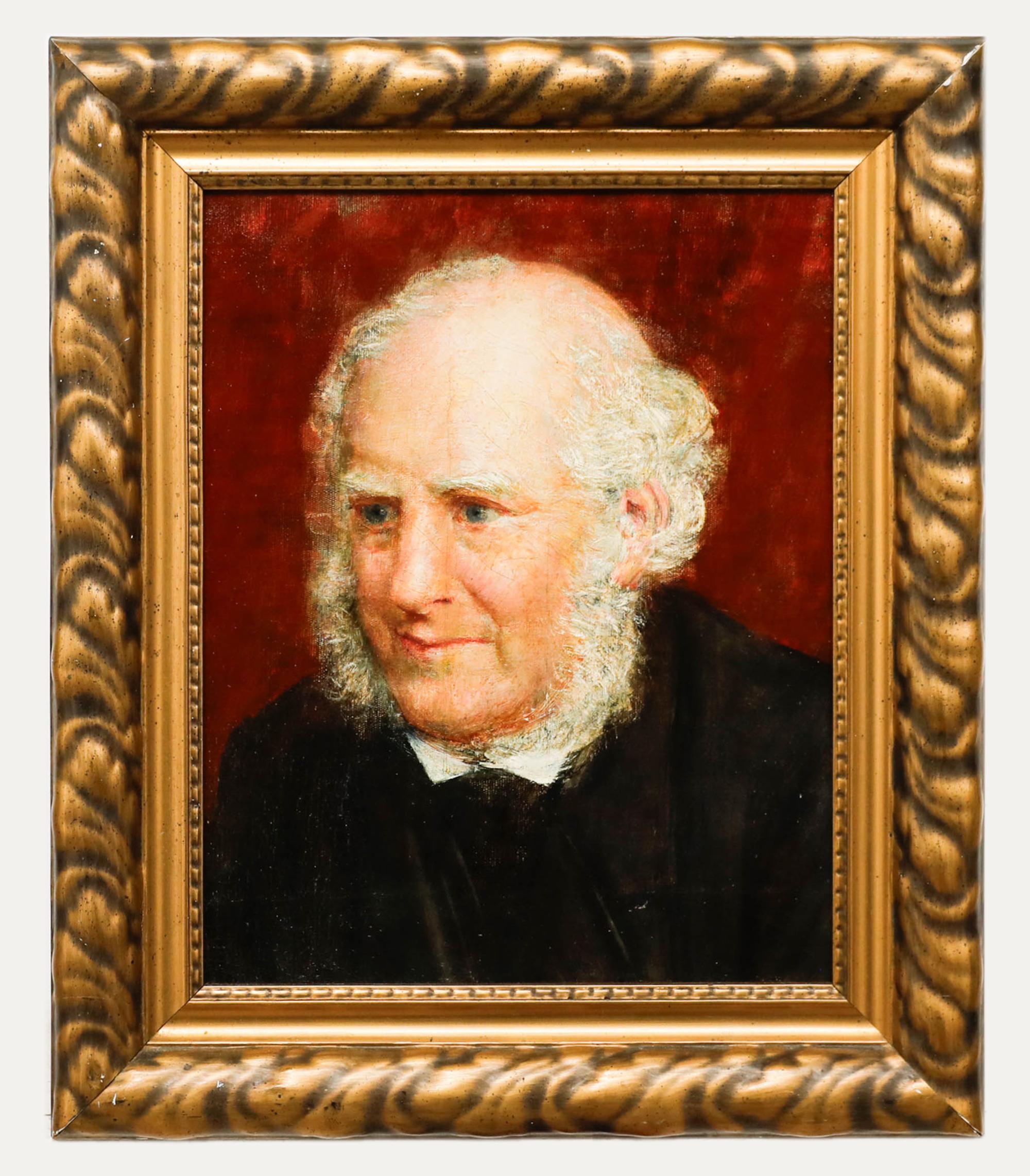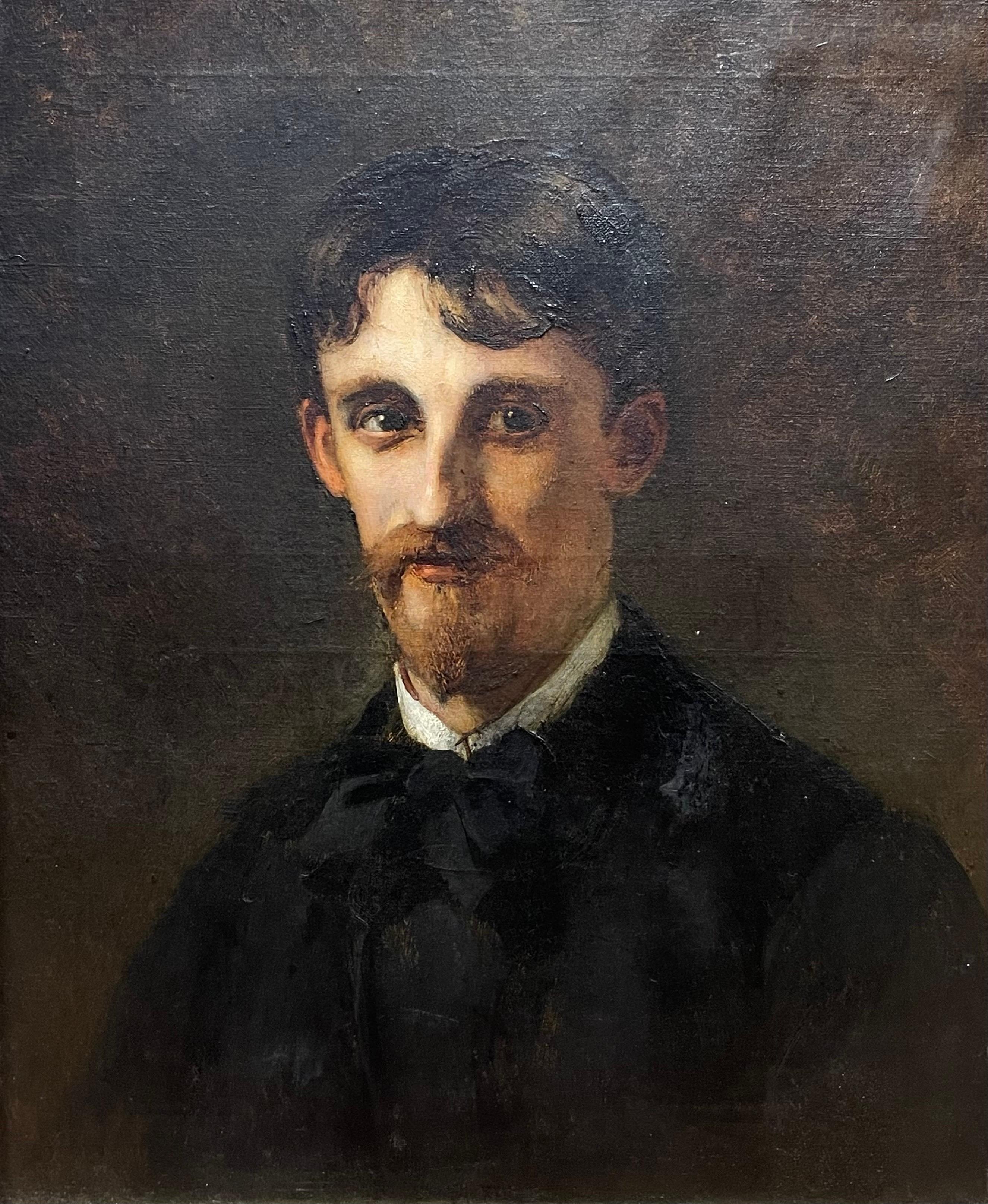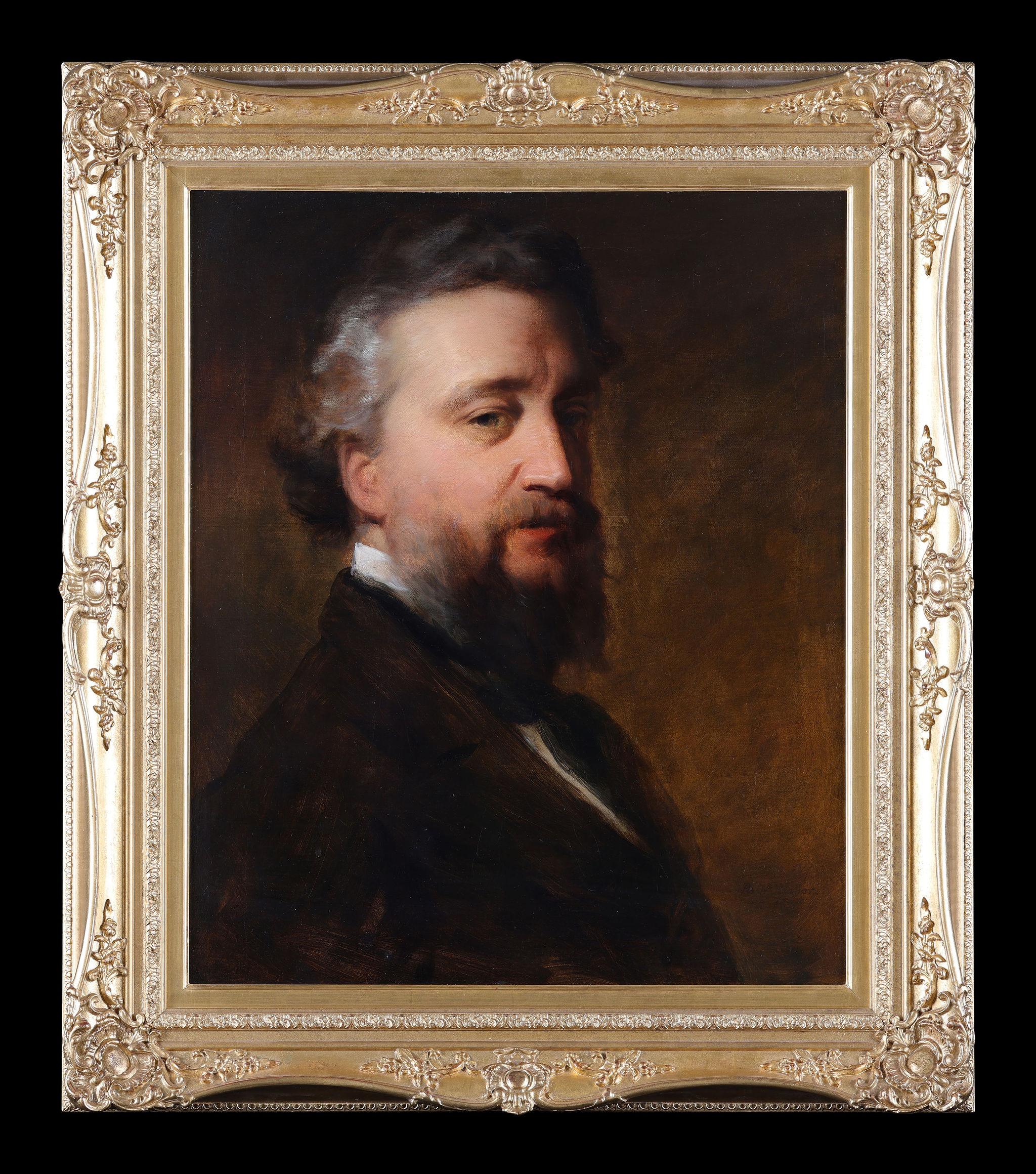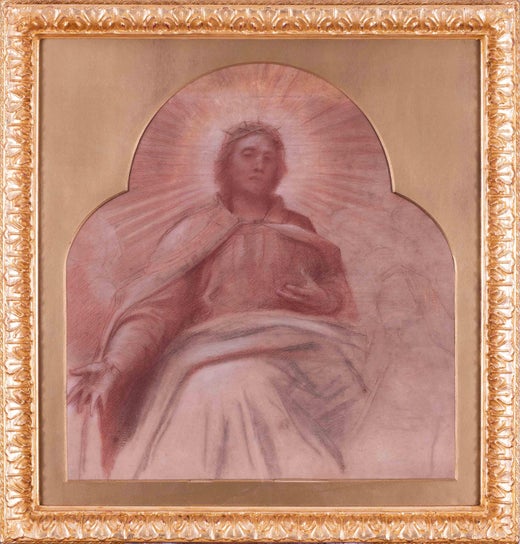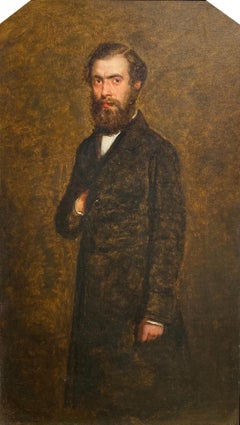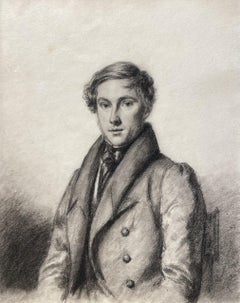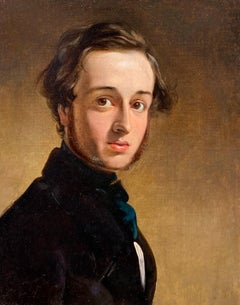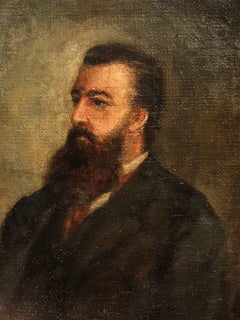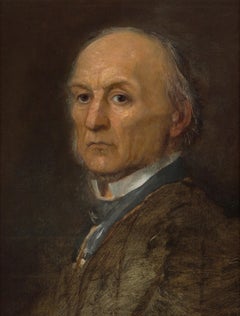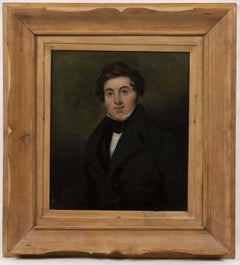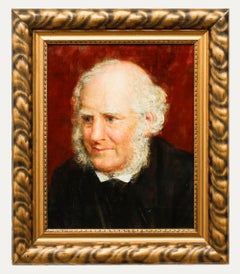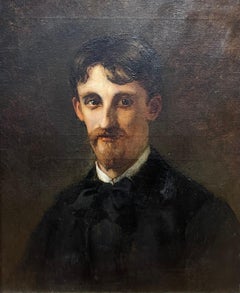Items Similar to Portrait of Herbert Fisher, Mid-19th Century Oil Painting, Original Watts Frame
Want more images or videos?
Request additional images or videos from the seller
1 of 6
George Frederic WattsPortrait of Herbert Fisher, Mid-19th Century Oil Painting, Original Watts Framec.1855-1860
c.1855-1860
$27,281.31
£19,800
€23,431.51
CA$37,587.07
A$41,877.30
CHF 21,861.93
MX$508,446.27
NOK 274,790.24
SEK 259,743.54
DKK 174,913.39
About the Item
Oil on canvas
c.1855 - 1860
Image size: 19 x 14 inches (48.25 x 37.25 cm)
Original Watts frame
The Sitter
Herbert William Fisher (1826 - 1903) was a British historian, best known for his 'Considerations on the Origin of the American War' (1865). Fisher was tutor to the future King Edward VII, and served as Private Secretary to the 5th Duke of Newcastle. in 1863 he became Private Secretary to the Prince of Wales, his former pupil, before being appointed to the position of Vice-Warden of the Stannaries in 1870. One of his daughters, Adeline, married Ralph Vaughan Williams.
George Frederick Watts
Watts (1817 - 1904) was a British painter and sculptor associated with the Symbolist movement. He is known to have said 'I paint ideas, not things'. Watts became famous in his lifetime for his allegorical works, such as 'Hope' and 'Love and Life' in which the emotions and aspiration life were intended to be represented in a universal symbolic language.
Watts was born in Marylebone in central London on the birthday of George Frederic Handel (after whom he was named), to the second wife of a poor piano-maker. He showed artistic promise very early, learning sculpture from the age of 10 with William Behnes, starting to study devotedly the Elgin Marbles (later writing "It was from them alone that I learned") and then enrolling as a student at the Royal Academy Schools at the age of 18.
He first exhibited at the Academy in 1837, with a picture of "The Wounded Heron" and two portraits, but his attendance at the Academy was short-lived, and his further art education was confined to personal experiment and endeavour, guided by a constant appeal to the standard of ancient Greek sculpture. He also began his portraiture career, receiving patronage from his close contemporary Alexander Constantine Ionides, who later came to be a close friend. In 1849 the first two of the allegorical compositions which form the most characteristic of the artist's productions were exhibited—"Life's Illusions," an elaborate presentment of the vanity of human desires, and "The people that sat in darkness," turning eagerly towards the growing dawn. In 1850 he first gave public expression to his intense longing to improve the condition of humanity in the picture of "The Good Samaritan" bending over the wounded traveller; this, as recorded in the catalogue of the Royal Academy, was "painted as an expression of the artist's admiration and respect for the noble philanthropy of Thomas Wright, of Manchester," and to that city he presented the work. From the late 1840s onward he painted many portraits in France and England, some of which are described below. Notable pictures of the same period are “Sir Galahad” (1862), “Ariadne in Naxos” (1863), “Time and Oblivion” (1864), originally designed for sculpture to be carried out “in divers materials after the manner of Pheidias,” and “Thetis” (1866).
Watts's association with Rossetti and the Aesthetic movement altered during the 1870s, as his work increasingly combined Classical traditions with a deliberately agitated and troubled surface, to suggest the dynamic energies of life and evolution, as well as the tentative and transitory qualities of life. These works formed part of a revised version of the House of Life, influenced by the ideas of Max Müller, the founder of comparative religion. Watts hoped to trace the evolving "mythologies of the races [of the world]" in a grand synthesis of spiritual ideas with modern science, especially Darwinian evolution.
Many of his paintings are owned by Tate Britain – he donated 18 of his symbolic paintings to Tate in 1897, and three more in 1900. Some of these have been loaned to the Watts Gallery in recent years, and are on display there. He was also admired as a portrait painter. His portraits were of the most important men and women of the day, intended to form a "House of Fame". In his portraits Watts sought to create a tension between disciplined stability and the power of action. He was also notable for emphasising the signs of strain and wear on his sitter's faces. Of his British subjects many are now in the collection of the National Portrait Gallery: 17 were donated in 1895, with more than 30 more added subsequently
- Creator:George Frederic Watts (1817 - 1904, British)
- Creation Year:c.1855-1860
- Dimensions:Height: 19 in (48.26 cm)Width: 14 in (35.56 cm)
- More Editions & Sizes:1 of 1Price: $27,281
- Medium:
- Movement & Style:
- Period:
- Condition:
- Gallery Location:London, GB
- Reference Number:1stDibs: LU52413220652
George Frederic Watts
George Frederic Watts OM, RA (1817 – 1904) was considered one of the greatest artists of the Victorian era, internationally renowned and celebrated in his own lifetime. He pursued an individual artistic approach and is remembered most for his large-scale symbolist paintings reflecting Victorian sensibilities and Hall of Fame portraits, capturing his distinguished contemporaries in Victorian society. In artistic terms he is significant not only because of the works he produced, but because of his determined innovation in developing an artistic practice which was not tied to a larger artistic movement. A portraitist, sculptor, landscape painter and symbolist, Watts's work embodied the most pressing themes and ideas of the time, earning him the title England's Michelangelo.
About the Seller
5.0
Vetted Professional Seller
Every seller passes strict standards for authenticity and reliability
Established in 2007
1stDibs seller since 2014
82 sales on 1stDibs
Typical response time: 3 hours
- ShippingRetrieving quote...Shipping from: London, United Kingdom
- Return Policy
Authenticity Guarantee
In the unlikely event there’s an issue with an item’s authenticity, contact us within 1 year for a full refund. DetailsMoney-Back Guarantee
If your item is not as described, is damaged in transit, or does not arrive, contact us within 7 days for a full refund. Details24-Hour Cancellation
You have a 24-hour grace period in which to reconsider your purchase, with no questions asked.Vetted Professional Sellers
Our world-class sellers must adhere to strict standards for service and quality, maintaining the integrity of our listings.Price-Match Guarantee
If you find that a seller listed the same item for a lower price elsewhere, we’ll match it.Trusted Global Delivery
Our best-in-class carrier network provides specialized shipping options worldwide, including custom delivery.More From This Seller
View AllPortrait of Doctor Carter, Scottish 19th Century Signed Oil Painting
Located in London, GB
Oil on board, signed, titled and dated '1858' on verso
Image size: 10 1/2 x 18 1/2 inches (26.5 x 47 cm)
Gilt frame
This is a wonderful portrait that was painted by John Burr at a t...
Category
Late 19th Century Portrait Paintings
Materials
Oil, Board
Portrait of a Young Man, 19th Century English, Charcoal, Signed and Dated '1888'
Located in London, GB
Charcoal on paper, signed and dated '1888' bottom right
Image size: 9 x 7 1/2 inches (22.75 x 19 cm)
Period frame
The half-length portrait depicts the subject sat, wearing a white s...
Category
1880s Victorian Portrait Drawings and Watercolors
Materials
Paper, Charcoal
Self Portrait, 19th Century Pre-Raphaelite Oil Painting
Located in London, GB
Oil on canvas
Image size: 9 1/4 x 7 inches (23.5 x 18 cm)
Original pierced gilt frame
This wonderful Pre-Raphaelite self-portrait contributes to the artistic tradition of representi...
Category
19th Century Pre-Raphaelite Portrait Paintings
Materials
Canvas, Oil
Portrait of Thomas Cooper Gotch, 19th Century Oil Painting
Located in London, GB
Oil on canvas on board
Image size: 7 x 5¼ inches (18 x 13.5 cm)
Framed
This portrait of Thomas Gotch is by his lifelong friend and confidante, Jane Ross, whom he met at Heatherley’s...
Category
1880s English School Portrait Paintings
Materials
Canvas, Oil
Self Portrait. Original Oil Painting Austrian 19th Century
Located in London, GB
Joseph Weidner
Austrian 1801 - 1870
Self Portrait
Oil on canvas, signed lower left
Image size: 23 x 19 inches (58.5 x 48.5 cm)
Original gilt swept fra...
Category
1860s Vienna Secession Portrait Paintings
Materials
Oil
Portrait of a Mary Hardy (nee Sulman), Late 19th Century Victorian Oil
Located in London, GB
Slade School
Late 19th Century
Portrait of a Mary Hardy (nee Sulman)
Oil on panel
Image size: 8 x 7 inches
Contemporary frame
Provenance
Lady Town (Grandda...
Category
Late 19th Century Victorian Portrait Paintings
Materials
Oil, Panel
You May Also Like
Portrait Of Prime Minister William Ewart Gladstone By George Frederic Watts
By George Frederic Watts
Located in New Orleans, LA
George Frederic Watts
1817-1904 British
Portrait of Prime Minister William Ewart Gladstone
Oil on canvas
This exceptional portrait captures t...
Category
19th Century Portrait Paintings
Materials
Canvas, Oil
Portrait of a Young Gentleman English circa 1860's Period Framed Oil Painting
Located in Cirencester, Gloucestershire
19th century English school
Portrait of a young gentleman (a scholar?) in dress suit
oil on canvas, framed
framed: 21 x 19.5 inches
canvas: 14 x 1...
Category
Mid-19th Century Victorian Portrait Paintings
Materials
Canvas, Oil
Arthur Trevor Haddon (1864-1941) - 19th Century Oil, Portrait of a Man
By Arthur Trevor Haddon
Located in Corsham, GB
This portrait depicts an elderly gentleman with white hair and a beard, gazing thoughtfully to the side against a rich, dark background. The ornate gold frame surrounding the paintin...
Category
19th Century Portrait Paintings
Materials
Oil
Antique French Impressionist Signed Oil Painting Portrait of Young Man
Located in Cirencester, Gloucestershire
Portrait of a Young Man
French School, late 19th century
indistinctly signed top right, 'Valadon'?
oil on canvas, framed
framed: 30 x 28 inches
canvas: 26 x 21 inches
private collect...
Category
Late 19th Century Impressionist Portrait Paintings
Materials
Oil, Canvas
$2,845 Sale Price
30% Off
A Portrait of Lord Leighton. Antique oil on canvas
Located in St. Albans, GB
Richard Waller
1811 - 1882
Canvas Size: 24 x 20" (60 x 50cm)
Frame Size: 31" x 27" (77.5 x 67.5cm)
Oil on canvas
Signed and dated 1872
London painter of portraits and suggestive sub...
Category
1870s Victorian Portrait Paintings
Materials
Oil
Portrait of Charles Francis Montresor 1825-98 British Victorian art oil painting
Located in Hagley, England
This lovely British Victorian portrait oil painting is by noted and well exhibited artist Alfred Fitzwalter Grace. Painted circa 1875 it is a seated profile portrait of Charles Franc...
Category
19th Century Realist Portrait Paintings
Materials
Oil
More Ways To Browse
By Watts Art
19th Century American Portrait Paintings
Portrait 1903
Antique Greek Painting
Altered Portrait
Early 19th Century American Portraits
Antique Picture Frames London
19th Century Greece Painting
American Antique Picture Frames
Thomas Alexander
Piano Art Sculpture
George Fisher
Piano 1900
Paintings By Thomas King Original
Poor Things
American Victorian Portrait Painting
1850 Portrait American
Elgin American
